Introduction
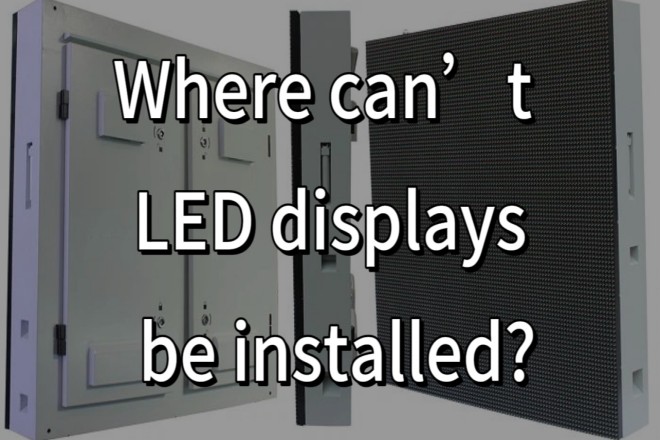
Afficheurs LED, with their excellent display effects and flexibility, have become an indispensable part of modern information dissemination. However, the correct choice of installation location is essential to maximize their performance, ensure safety, and reduce maintenance costs.
This article aims to explore in depth those areas that are not suitable for installing LED displays and provide a practical reference guide for industry practice.
1. Policy-restricted areas are not suitable for installation
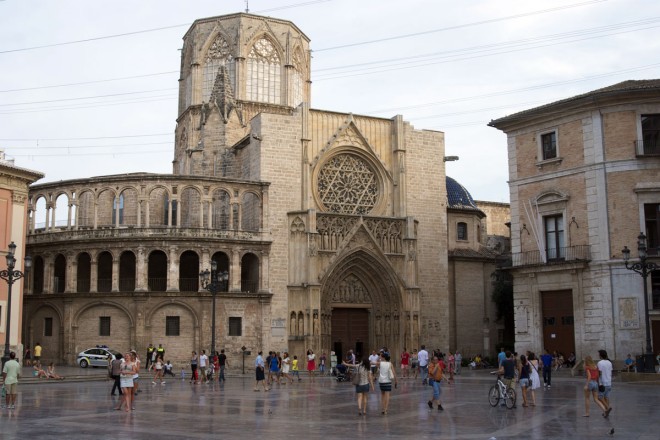
When you are walking in an old city full of historical charm, suddenly, a huge LED display flashing colorful advertisements comes into view. Do you feel a little out of place?
This is actually an intuitive reason why policy-restricted areas are not suitable for installing LED displays. Let’s talk about this topic in detail below.
1). Harmony of urban appearance
Every city has its own unique charm and style, especially those with a deep historical heritage. In order to maintain this unique urban appearance, the government often strictly controls outdoor advertising, including LED displays.
Think about it: If the streets were full of colorful displays, wouldn’t the characteristics of the city be submerged? Therefore, in policy-restricted areas, installing LED displays may destroy the overall beauty of the city, making people feel “a bit of a downer.”
2). Double consideration of safety and environmental protection
Although the LED display looks good, it is also a “big guy.” When installing it, you have to consider the load-bearing capacity of the building, and it must be windproof and rainproof to ensure that it is hung there steadily.
Policy-restricted areas often have strict regulations on these things in order to avoid safety hazards. In addition, the brightness, flickering frequency, and noise during the operation of the LED display may bring “burdens” to the surrounding environment.
Of course, the government must take care of it to protect our living environment from pollution.
3). The “red line” of laws and policies cannot be touched
Every city has its own rules. Regarding the setting of outdoor advertisements, the government has a set of detailed laws and policies.
These regulations are not just casually said. They clarify where the LED display can be installed, where it cannot be installed, how big it is, how bright it is when it can be turned on, etc.
If you don’t follow the rules, you will face fines, demolition, or even more serious legal consequences. Therefore, when installing LED displays in policy-restricted areas, you must first ask yourself: “Am I breaking the law by doing this?”
4). Respect history and protect culture
In some places with a long history and culture, such as ancient cities and cultural relics, the government will be particularly careful.
These places carry the memories and stories of the city and must not be destroyed. Installing LED screens in such areas may not only damage cultural relics but also destroy the historical atmosphere.
Therefore, in order to respect history and protect culture, policy-restricted areas often say “no” to LED screens.
2. Areas where the environment is not suitable for installing LED screens
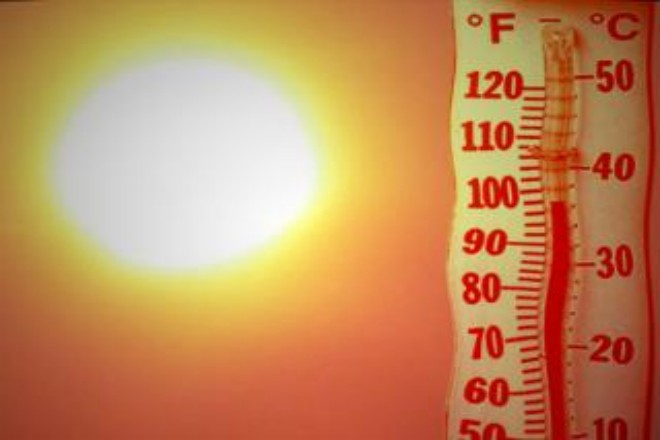
1). Surrounded by high temperature, high humidity and “poisonous gas”
Imagine that you installed your beloved LED screen in a hot and humid place, which may be filled with all kinds of strange gases. Oh, this is bad!
- High temperature and high humidity:
It’s like throwing you into a sauna. Can you stand it? The small parts in the LED screen can’t stand it either! They will accelerate aging, performance degradation, and may “strike” one day. Moreover, when the humidity is high, water vapor may penetrate in, causing short circuits or abnormal display.
But there are also some things to note here; that is, the high-temperature room refers to a place that often reaches about 55 degrees Celsius.
If it is about 40 degrees, it can be installed because the LED display has a built-in cooling fan and can even be equipped with an air conditioner. Just pay attention to check and prevent fire when using it.
The LED display cannot be installed in a place that reaches about 55 degrees Celsius.
- Highly corrosive gas:
This is even more serious, just like feeding “poison” to the display. These gases can corrode the surface of the display and the circuits inside, making it riddled with holes, which not only affects the use but may also cause safety problems.
2). “Encirclement” of flammable materials and dust
Let’s talk about another environment, which is a place with a lot of flammable materials and dust.
- Near flammable materials:
This is simply a “time bomb” installed on the display. Think about it: the display will heat up when it is working. If you accidentally ignite the flammable materials next to it, it will really be a “fire”! Moreover, many safety regulations do not allow electronic equipment to be installed in such places. For everyone’s safety, don’t take risks.
- Dust environment:
Dust, this little guy, may seem inconspicuous, but it is not small. They will accumulate on display, affecting heat dissipation and making the display “fever.” Moreover, the metal particles in the dust may cause a short circuit, causing the display to “hang up” directly.
3). “Baking test” of direct sunlight
- Finally, let’s talk about the problem of direct sunlight.
Did you know? Although the LED display is bright, it is not the opponent of the sun. If it is installed in direct sunlight, the display effect will be greatly reduced. The image on the screen will become blurred as if it has been “burned” by the sun.
Moreover, if it is exposed to the sun for a long time, the LED lamp beads may not be able to bear it, and the life span will be greatly shortened.
So, when installing the LED display screen outdoors, you must find a shaded place or install a sunshade to protect it from the “test” of the sun.
3. Structural, unstable areas are not suitable for installation
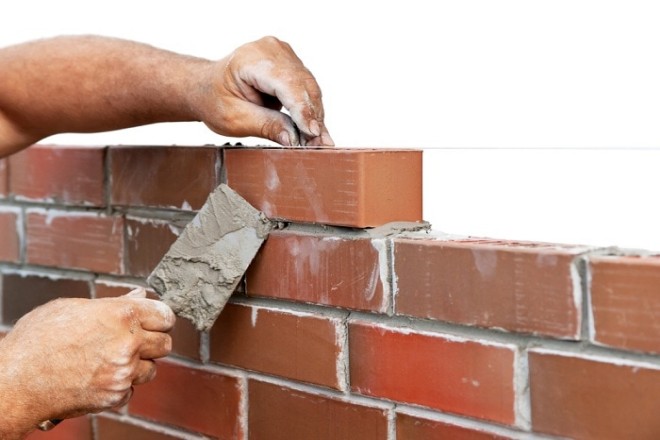
1). Locations without stable support structures
Imagine that you hold a heavy object in your hand and want to put it down steadily, but the surroundings are soft, and there is no hard place. This feeling is quite a headache, isn’t it? The same is true for LED displays.
- No wall support:
If there is no stable wall at the installation site, where should the LED display screen be hung? You can’t just let it hang there, right? This not only looks dangerous, but it is actually unsafe. A gust of wind blows, or a slight touch may cause it to fall, which is a big disaster.
- Uneven ground:
Let’s talk about the ground. If the ground is bumpy, the LED display will be shaky when placed on it. If this continues for a long time, the internal structure of the display may be damaged, not to mention the display effect. Moreover, if it is accidentally knocked down one day, the loss will be great.
- Areas with strong winds:
Some places have particularly strong winds, such as the roofs of high-rise buildings and open fields. Installing LED display screens in such places is simply “delivering food” to the wind. Once the wind blows, the display screen may be shaky or even blown down by the wind. How dangerous!
2). Walls or brackets with insufficient load-bearing capacity
In addition to having stable support, the LED display screen must also consider the load-bearing problem. After all, it is so heavy that it cannot be hung anywhere.
- Wall load-bearing capacity:
If you want to hang the LED display screen on the wall, the wall must be able to withstand its weight. If the wall is not load-bearing enough, the wall may crack and collapse once the display screen is hung, which will be a big deal.
- Bracket load-bearing capacity:
Some people may say, then I can use a bracket to support it, right? However, the bracket must also be able to bear the weight of the display. If the bracket is not load-bearing enough, the result will be the same. The display may fall, or the bracket may deform or break, which are all safety hazards.
Therefore, structurally unstable areas are really not suitable for installing LED displays. Not only because there is no place to hang it steadily, but also because these places may not be able to bear enough weight, which poses a serious safety hazard.
Before installing the LED display, you must carefully examine the structural stability and load-bearing capacity of the installation location to ensure that there is no room for error. Don’t bring unnecessary trouble and loss to yourself and others because of momentary negligence!
4. Areas with insufficient power supply are not suitable for installation
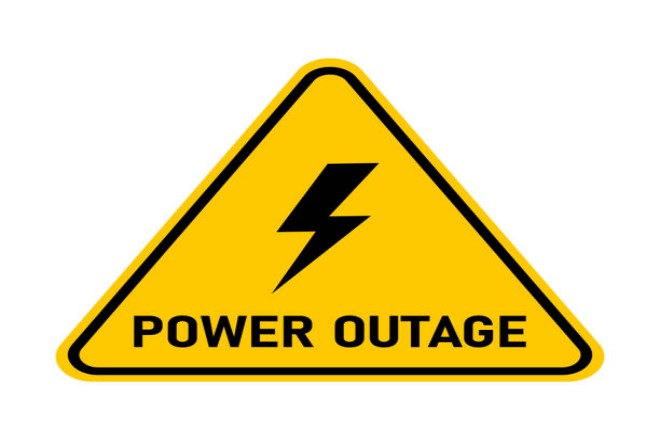
1). Locations without stable power supply: the “nightmare” of LED display screens
LED display screens are “electric tigers” and require a stable power supply to ensure their normal operation. If there is no stable power supply at the installation location, it is really a “nightmare” for the display screen.
- Excessive voltage fluctuation:
Voltage fluctuation is a common manifestation of an unstable power supply. For LED display screens, excessive voltage fluctuation is a big problem. It may cause the display to flicker, as if it is playing a “blinking game” with you, seriously affecting the viewing effect.
What’s more serious is that long-term voltage fluctuations may also cause damage to the internal components of the display and shorten its service life.
- Frequent power outages:
In some areas with unstable power supply, frequent power outages are also commonplace. This is undoubtedly a huge challenge for LED displays that require continuous power supply. Each power outage may cause the display to restart, which not only affects the viewing experience, but may also damage the circuit system of the display.
2). Areas with complex power lines or difficult wiring:
In addition to the stability of the power supply, the complexity of the power lines and the difficulty of wiring are also important factors to consider when installing LED displays.
- Difficult construction:
Complex lines mean that the construction is difficult, and you have to go around and around, like walking in a maze. This is not only time-consuming and labor-intensive but may also leave safety hazards due to line problems. If the line shorts out one day, the consequences will be unimaginable.
- Entretien difficile :
The complexity of the power line will also affect the subsequent maintenance work. If the line is too complex or difficult to reach, it will face great difficulties in daily maintenance or troubleshooting. This will not only increase the maintenance cost but also cause the display screen to malfunction or be damaged due to untimely maintenance.
5. Areas with difficult maintenance are not suitable for installation
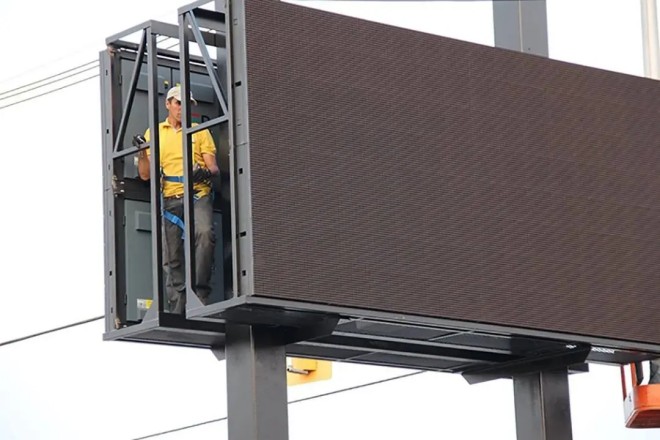
1). Locations that are difficult to access or operate:
Some locations look good, but once they need maintenance, they become a “nightmare” for maintenance personnel.
- High altitude location:
Just think about it: if the LED display screen is installed at a high altitude, how much effort will it take to maintain it? Every time you have to climb up and down for maintenance, it is not only tiring but also dangerous. If the wind is strong one day or the maintenance personnel slip, it will be a big deal.
- Narrow space:
In addition, those narrow spaces are also “dead corners” for maintenance. The display screen is installed, but the maintenance personnel cannot enter, or they cannot move around after entering. In this way, daily maintenance becomes a big problem, and it is difficult to detect and deal with problems with the display screen in time.
- Zones fréquentées :
Places with dense populations are not suitable for installing display screens. Why? Because there are so many people, maintenance personnel have to squeeze in to inspect, which is inefficient and may cause safety accidents due to the large number of people.
2). Locations without good ventilation and drainage conditions:
In addition to the difficult location for maintenance, ventilation, and drainage conditions are also important factors affecting the life of the display.
- Poor ventilation:
LED display screens generate a lot of heat when working. If the ventilation is poor, the heat will be difficult to dissipate, resulting in excessive temperature of the display screen. In the long run, the components of the display screen may be damaged due to overheating, shortening the service life.
- Poor drainage:
Let’s talk about the drainage problem. If the installation location has poor drainage, once it encounters rainy days or other water sources, it may cause water accumulation. Water accumulation will not only affect the normal operation of the display screen but may also cause safety hazards such as circuit short circuits due to humidity.
6. Other special areas are not suitable for installation
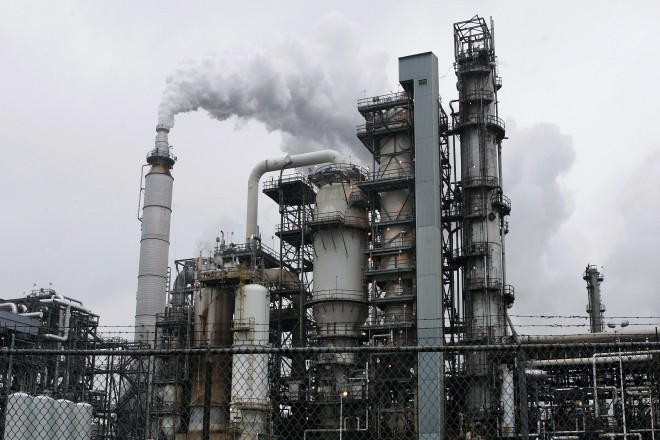
1). Chemical plants, power plants, and refineries:
When it comes to chemical plants, power plants, and refineries, the first thing that comes to mind is various dangerous factors.
That’s right, these places, because of the special nature of production or storage, often have dangerous factors such as flammable and explosive items and corrosive gases.
- Flammable and explosive items:
Think about it, although the LED display screen itself does not produce sparks, it would be dangerous if it encounters an unexpected situation, such as a short circuit. In these places, a little spark may cause a big explosion, and the consequences are disastrous.
- Corrosive gases:
There are also corrosive gases, which are also a big threat to LED displays. These gases may corrode the display screen’s shell, circuits and other components, causing the display screen to malfunction or even damage.
So, these places are really not suitable for installing LED displays. We still have to put safety first and not joke about life and property.
Conclusion
In summary, carefully selecting the installation location of the LED display screen requires careful consideration of environmental adaptability, safety regulations, and long-term operation and maintenance requirements.
Avoiding unsuitable areas is the key to ensuring the stable operation of the display screen, extending its service life, and maintaining public safety.
Enfin, si vous souhaitez en savoir plus sur les écrans LED, veuillez nous contacter.
